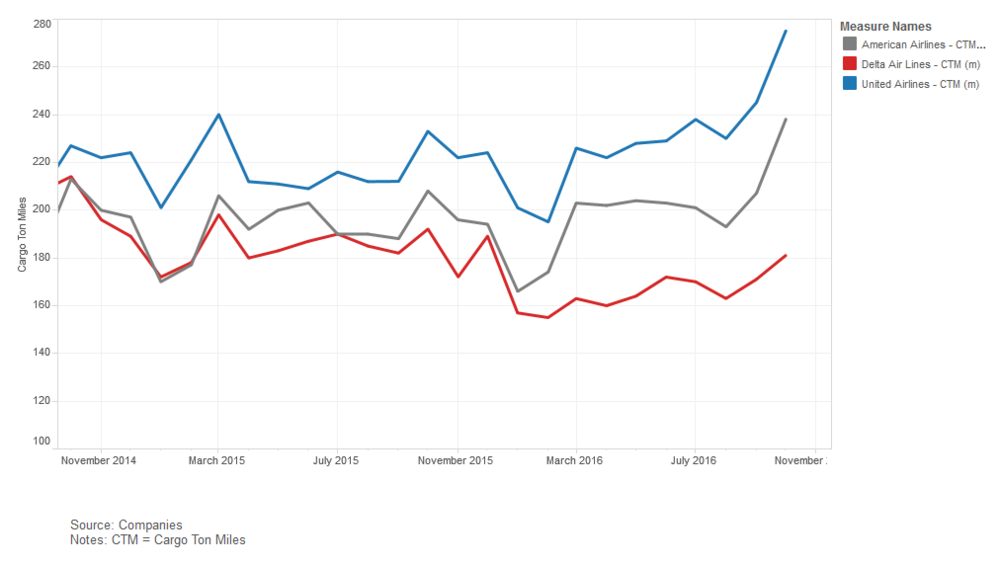American Cargo Monthly: Bumper month for United and American
30 / 11 / 2016
October was another bumper month for United Airlines and American Airlines on the demand front as both carriers reported double-digit increases in cargo demand, while Delta’s traffic for the month slipped on a year ago.
United, the country’s largest cargo carrier, recorded an 18.1% year-on-year increase in demand to 275m cargo ton miles (CTM) in October. This is the airline’s biggest monthly increase since February 2015 and the airline’s seventh in a row.
The carrier also now looks set to record an improvement for the entire year, with traffic for the first ten months 5.6% up on the previous year at 2.3bn CTM.
Click on chart to see interactive dashboard

It was a similar performance at American, which recorded a 14.4% improvement in October to 238m CTM. This was the airline’s seventh increase in a row and the largest percentage improvement since January 2014.
For the first ten months, demand at the airline is now 3.5% ahead of last year at 2bn CTM. The improvement in performance at the two US airlines’ reflects a general market improvement that started in September and looks set to continue into October.
American has also been expanding its network as it takes delivery of new aircraft as part of a fleet modernisation.
While there were improvements at United and American, Delta continued to see traffic decrease and also its performance diverge compared with that of its larger competitors.
The US carrier recorded a 5.9% decline in traffic during the month to 181m CTM. This is the airline’s twentieth year-on-year monthly decrease in a row.
However, its latest quarterly results showed that it does generate higher revenues per cargo ton mile than its rivals.
The LATAM Group also recorded a drop in demand in light of struggling South American economies, although the rate of decline slowed compared with previous months.
Click on chart for interactive dashboard

The airline group registered a 1.7% decline in demand in October to 328m cargo tonne km, but the decline was its lowest since October 2014.
Meanwhile, the carrier has been busy withdrawing capacity – both freighter and bellyhold – and as a result its load factor for the month climbed to 57.5% against 54.9% last year.
Click on chart for interactive dashboard















